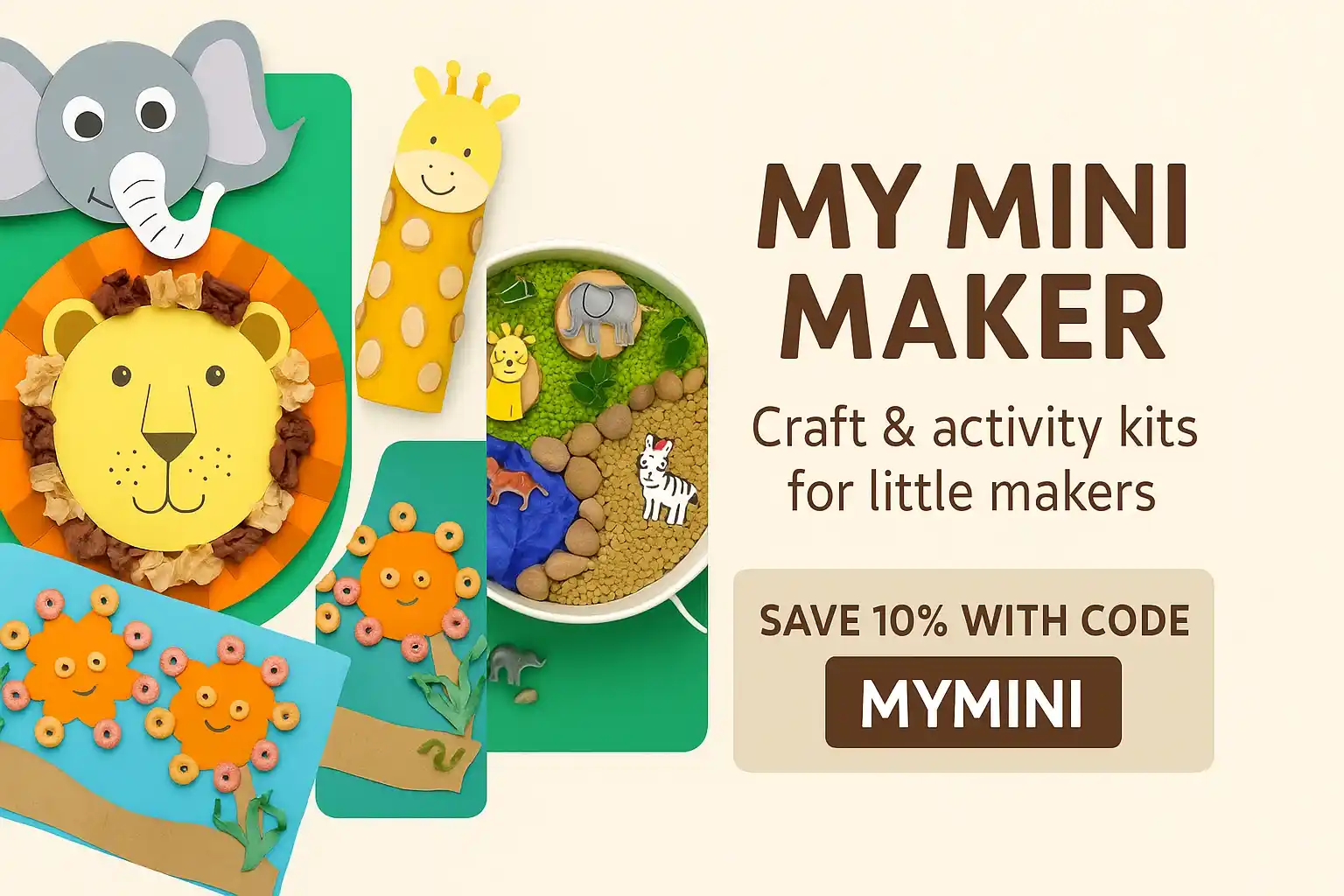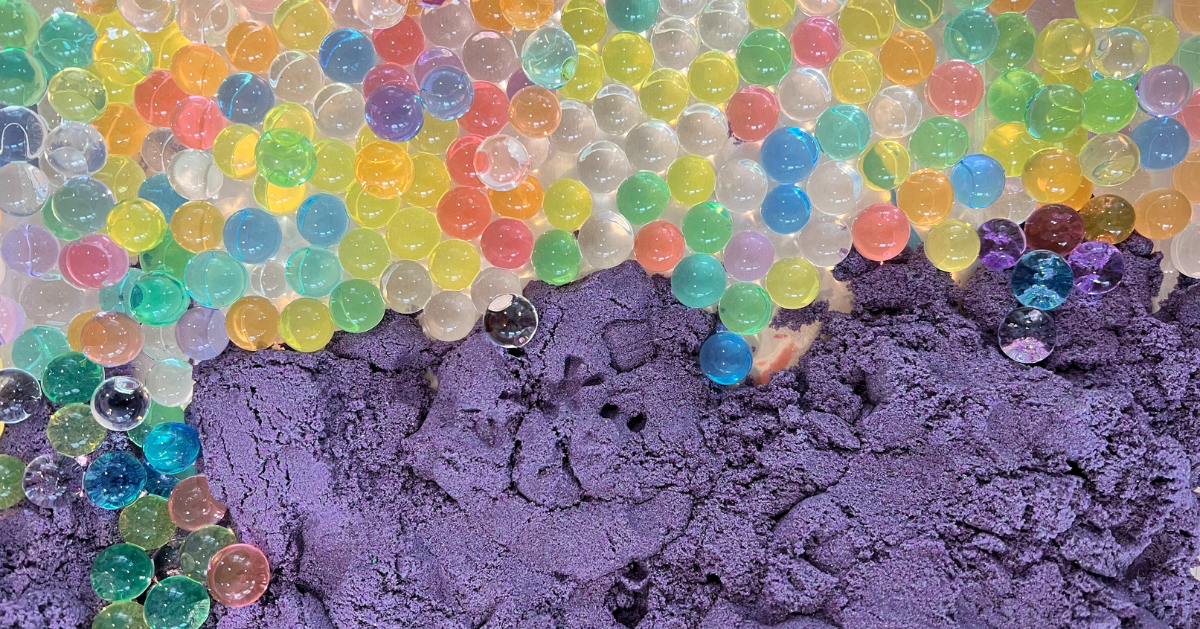Unleashing Potential: A Guide to Sensory Play for Growing Minds
Table of Contents
- Unleashing Potential: A Guide to Sensory Play for Growing Minds
- Why Sensory Play Matters: Beyond the Basics
- Top Sensory Bin Materials for Inspiring Play
- 1. Cloud Dough: A Fluffy Delight
- 2. Oobleck: The Magical Non-Newtonian Liquid
- Beyond Playdough: Creative Sensory Experiences for Kids
- 1. Oobleck: The Magical Non-Newtonian Fluid
- 2. Homemade Slime: A Tactile Delight
- 3. Foam Painting & Shaving Cream Fun: Artistic Sensory Play
- Expanding Sensory Play: The Benefits of Variety
- Beyond the Basics: Engaging Sensory Play Ideas for Growing Minds
- The Power of Tactile Exploration
- Expanding Sensory Horizons
- Beyond the Toy Box: 13 Sensory Bin Fillers for Engaging Play
- 1. Rice: A Classic for Calm and Exploration
- 2. Pasta: Shapes and Textures to Discover
- 3. Oats: A Soothing and Natural Option
- 4. Water Beads: A Tactile Delight (With Safety Precautions)
- 5. Popcorn Kernels: A Crunchy and Engaging Filler
- 6. Cereal: A Familiar and Colorful Base
- 7. Dried Beans: Versatile and Natural Exploration
- 8. Cornmeal: A Fine and Flowing Texture
- 9. Sand: A Timeless Classic for Imaginative Play
- 10. Rainbow Rice: A Vibrant and Colorful Experience
- 11. Colored Salt: A Versatile Sensory Material
- 12. Pasta Shapes: Exploring Textures and Forms
- 13. Oats: A Natural and Soothing Option
- Beyond the Bin: Creative Sensory Experiences for Little Explorers
- The Importance of Tactile Exploration
- Safe Alternatives to Water Beads
- Beyond Dough: Unique Tactile Materials
- Cloud Clay: A Fluffy Delight
- The Joy of Finger Painting
- Expanding Sensory Play Horizons
- More Inspiration from The Trendy Type
- Beyond the Basics: A Deep Dive into Sensory Play Materials for Growing Minds
- Why Sensory Play Matters: The Developmental Benefits
- Classic Sensory Bin Fillers: Tried and True Favorites
- Beyond the Bin: Expanding Your Sensory Material Toolkit
- Safety Considerations: Ensuring a Positive Experience
- Beyond the Materials: Encouraging Exploration and Creativity
Sensory play is a cornerstone of healthy child development, offering a wealth of benefits that extend far beyond simple entertainment. Engaging multiple senses – sight, touch, smell, hearing, and taste – stimulates brain growth, fosters creativity, and helps children understand the world around them. In today’s fast-paced environment, providing opportunities for sensory exploration is more crucial than ever.
Recent studies demonstrate a strong correlation between early sensory experiences and cognitive development. Children who regularly engage in sensory play exhibit improved problem-solving skills, enhanced language development, and greater emotional regulation. This type of play isn’t just about fun; it’s about building the foundational skills necessary for success in all areas of life. If you’re looking for ways to support your child’s development, explore our comprehensive resources on child development activities to discover more engaging ideas.
Why Sensory Play Matters: Beyond the Basics
Sensory experiences aren’t just enjoyable; they’re fundamentally important for a child’s developing brain. When children interact with different textures, sounds, and smells, they create neural pathways that strengthen cognitive abilities. This type of play can be incredibly calming, providing a sense of security and comfort, and can also help children learn to manage their emotions and behaviors. Learning to self-regulate is a vital skill, and sensory play offers a safe and engaging way to practice.
Furthermore, sensory play encourages exploration and discovery. Children learn through experimentation, and sensory materials provide endless opportunities to investigate, manipulate, and create. This hands-on learning fosters curiosity, problem-solving skills, and a lifelong love of learning. For more information on fostering a love of learning, check out our article on creative learning for kids.
Top Sensory Bin Materials for Inspiring Play
Sensory bins are a fantastic way to provide a contained and engaging sensory experience. Here are some of our favorite materials to spark imagination and learning:
1. Cloud Dough: A Fluffy Delight
Cloud dough is a wonderfully unique material that combines the best of both worlds – it’s soft and fluffy like a cloud, yet holds its shape when molded, similar to sand. This makes it perfect for building, sculpting, and imaginative play.
Recipe: Combine 8 cups of flour with 1 cup of oil (baby oil or vegetable/canola oil work well). To add color, mix oil-based food coloring with the oil before combining it with the flour.
Watch our Youtube video for a step-by-step guide on how to make cloud dough!
!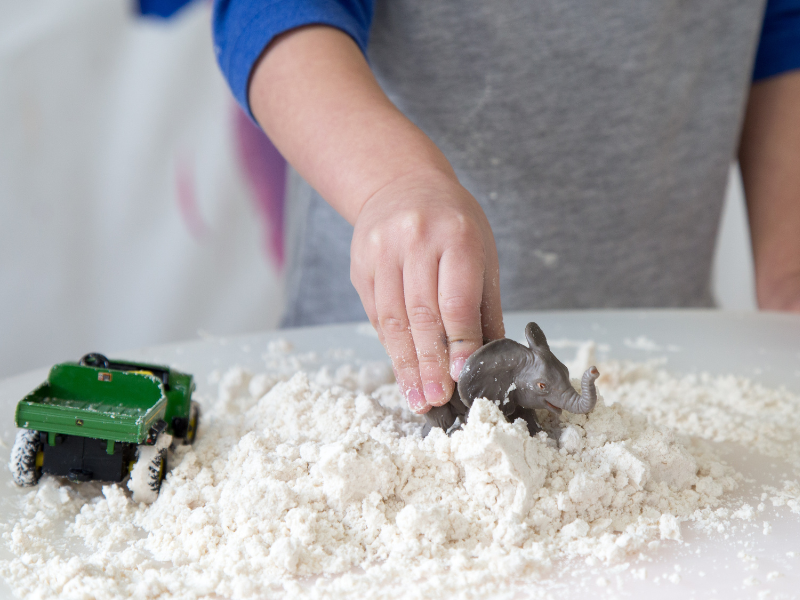
Photo by Jean Van’t Hul
2. Oobleck: The Magical Non-Newtonian Liquid
Oobleck, often referred to as “magic mud,” is a non-Newtonian fluid that behaves like both a liquid and a solid. This fascinating property makes it incredibly engaging for children to explore. It’s surprisingly easy to make and offers a wealth of learning opportunities.
There are a surprising number of fun ways to learn while playing with this unique substance! Discover more about the science behind oobleck and how to incorporate it into educational activities by exploring our resources on STEM activities for kids.
!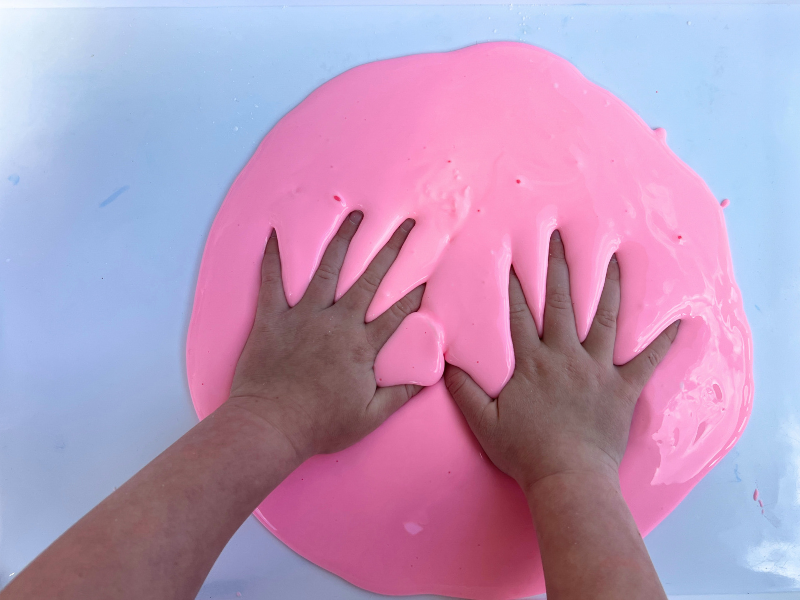
Photo by Andrea Martelle
These materials are just a starting point. The possibilities are endless! Encourage your child to experiment, explore, and create their own sensory experiences. Remember, the most important thing is to provide a safe and stimulating environment where they can learn and grow.
Beyond Playdough: Creative Sensory Experiences for Kids
Finding engaging and stimulating activities for children is a constant pursuit for parents and educators. While classic playdough remains a staple, expanding the repertoire of sensory experiences can unlock even greater developmental benefits and hours of fun. These tactile explorations aren’t just about entertainment; they foster creativity, fine motor skills, and cognitive growth. Let’s dive into some fantastic alternatives to playdough, offering unique textures and opportunities for imaginative play.
1. Oobleck: The Magical Non-Newtonian Fluid
Oobleck is a truly captivating substance that behaves in unexpected ways. It’s a simple mixture of cornstarch and water, creating a non-Newtonian fluid – meaning it acts as both a solid and a liquid depending on the pressure applied. This makes it incredibly engaging for children to explore.
The process is straightforward: combine approximately 1 cup of water with 1 ½ to 2 cups of cornstarch. Add a few drops of food coloring for a vibrant hue. The resulting mixture will feel solid when squeezed but will melt into a liquid when held loosely. It’s a messy, but wonderfully educational, experience!
2. Homemade Slime: A Tactile Delight
Slime has become a sensation for a reason! It’s easy to make at home and provides a fantastic sensory experience. The act of stretching, squeezing, and manipulating slime is incredibly satisfying and helps develop fine motor skills.
At TheTrendyType, we have a wealth of slime recipes to suit every preference. Explore our popular options, including:
How to Make Fluffy Slime! – For a cloud-like, soft texture.
How to Make Butter Slime without Borax – A smooth, spreadable slime that feels like butter.
* How to Make Glitter Slime – Add a sparkle to playtime with this dazzling slime.
Don’t forget to check out our slime creations for kids for added inspiration!
!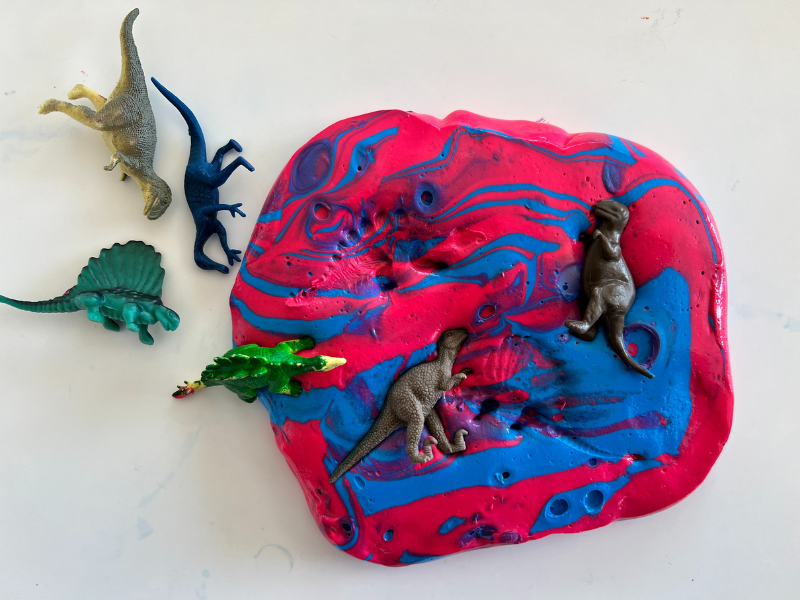
3. Foam Painting & Shaving Cream Fun: Artistic Sensory Play
Moving beyond purely tactile experiences, foam painting and shaving cream play combine sensory exploration with artistic expression. These materials offer a unique texture that’s different from traditional paints, encouraging children to experiment and explore.
Shaving cream can be used in countless ways. Kids love painting toys with it, spreading it on surfaces for tactile exploration, or even creating temporary “art” on windows! Adding a few drops of liquid watercolors or food coloring transforms the shaving cream into vibrant, colorful foam.
For foam painting, simply use foam shaving cream (not gel) and let your child explore with brushes, sponges, or even their fingers. It’s a wonderfully messy and creative activity that encourages experimentation and self-expression. Explore more shaving cream art ideas and foam painting techniques for even more inspiration.
!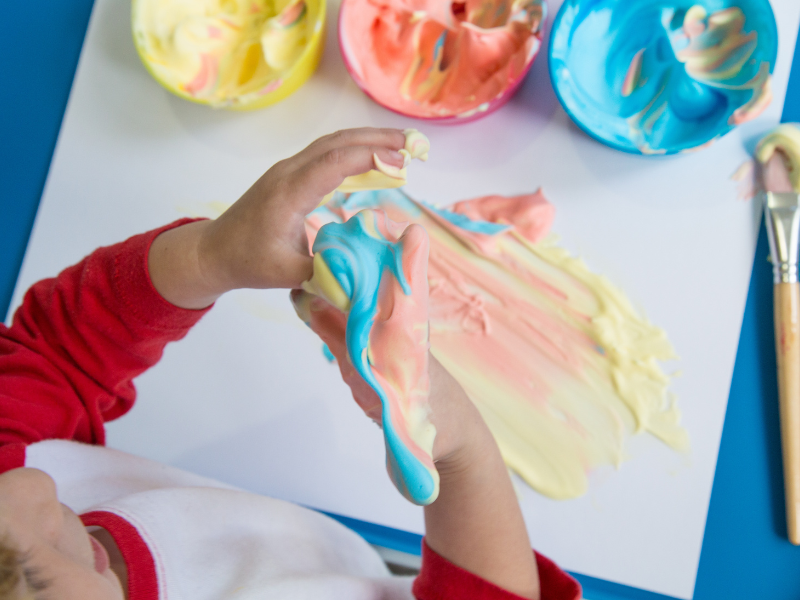
Expanding Sensory Play: The Benefits of Variety
Introducing a variety of sensory experiences is crucial for a child’s development. Each material offers unique properties that stimulate different senses and encourage exploration. By moving beyond traditional playdough, you can unlock new levels of creativity, fine motor skill development, and cognitive growth. Remember to always supervise children during sensory play and choose non-toxic materials.
Consider incorporating other materials like kinetic sand, water beads, or even cooked pasta into your sensory play repertoire. The possibilities are endless! And don’t forget to explore our resources at TheTrendyType for more sensory play ideas to keep your little ones engaged and learning.
Beyond the Basics: Engaging Sensory Play Ideas for Growing Minds
Sensory play is crucial for a child’s development, fostering creativity, problem-solving skills, and emotional regulation. It’s about exploring the world through touch, sight, sound, smell, and even taste (with appropriate, safe materials, of course!). While many parents are familiar with classic options, let’s dive into a range of engaging sensory experiences that go beyond the ordinary, offering diverse textures and opportunities for learning.
The Power of Tactile Exploration
Children learn so much through touch. Introducing varied textures helps refine their sensory processing and builds neural pathways. Here are a few ideas to spark tactile exploration:
1. Shaving Cream Creations:
Forget just shaving – transform this fluffy substance into an art medium! Spread shaving cream on a smooth surface (a tray, a tabletop covered with plastic) and let children explore with their hands, fingers, and even tools like plastic knives or paintbrushes. They can draw, swirl, and create temporary masterpieces. For an added sensory boost, incorporate a few drops of food coloring or glitter.
2. Cloud Dough Delights:
Cloud dough is a wonderfully soft and moldable material made from just two ingredients: flour and oil (baby oil or vegetable oil work well). The ratio is typically 8 parts flour to 1 part oil. This creates a texture that feels like soft, packable sand. Children can build, sculpt, and let their imaginations run wild.
3. Oobleck: A Non-Newtonian Wonder:
Oobleck is a fascinating substance that acts as both a liquid and a solid, depending on the pressure applied. Made from cornstarch and water, it’s a fantastic way to introduce basic scientific concepts in a playful way. Children will be captivated by its unique properties – it flows like a liquid when gently stirred, but becomes solid when squeezed.
Expanding Sensory Horizons
Beyond the classic tactile experiences, consider these options to broaden your child’s sensory repertoire:
4. Kinetic Sand: The Flowing, Sculptable Delight
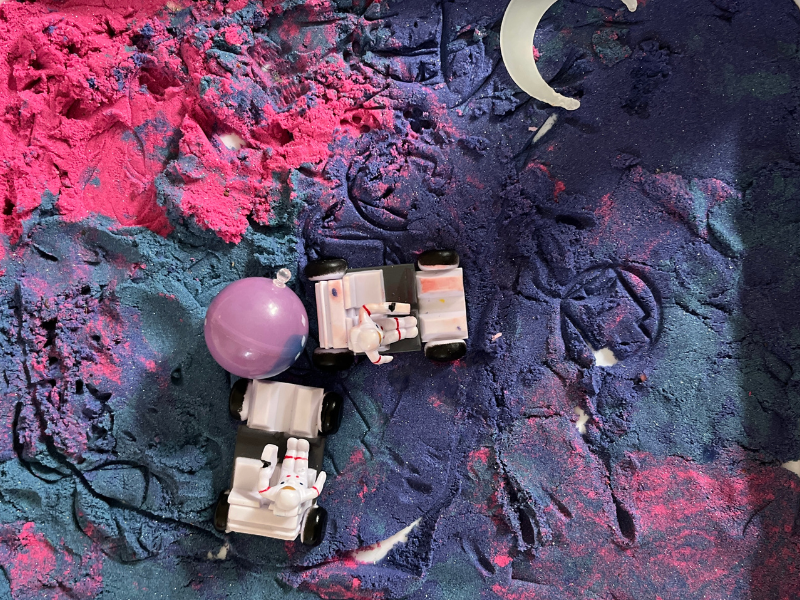
Kinetic sand has become a popular choice for good reason. This moldable sand flows through fingers yet holds its shape, offering a unique sensory experience. It’s perfect for building, sculpting, and simply enjoying the feeling of the sand between your fingers. For more ideas on fostering creativity through play, explore our guide to creative play ideas for toddlers (
5. Playdough: A Timeless Sensory Classic
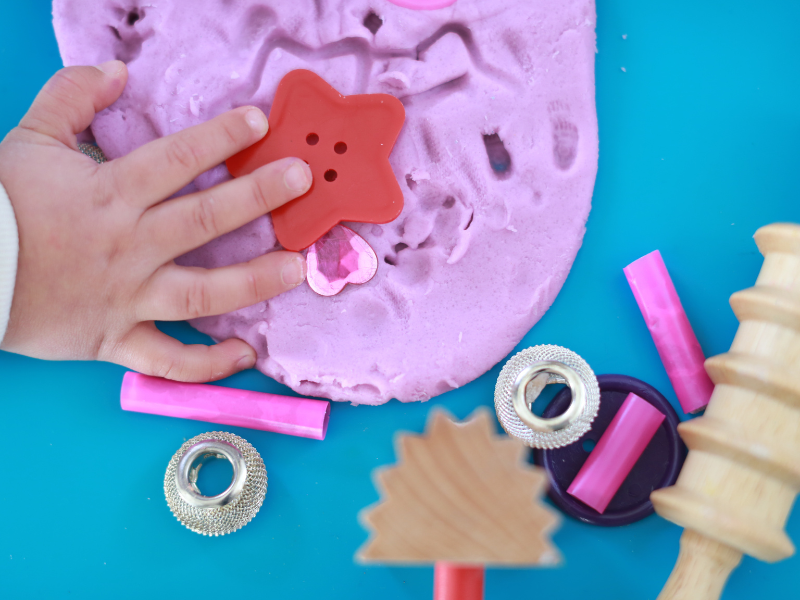
Playdough remains a beloved sensory material for a reason. Kneading, rolling, and shaping playdough strengthens fine motor skills and encourages creativity. Enhance the sensory experience by adding essential oils (lavender for calming, citrus for energizing) or textures like rice or glitter. Looking for the perfect recipe? Check out our no-cook playdough recipe (
6. Water Play: A Refreshing Sensory Experience
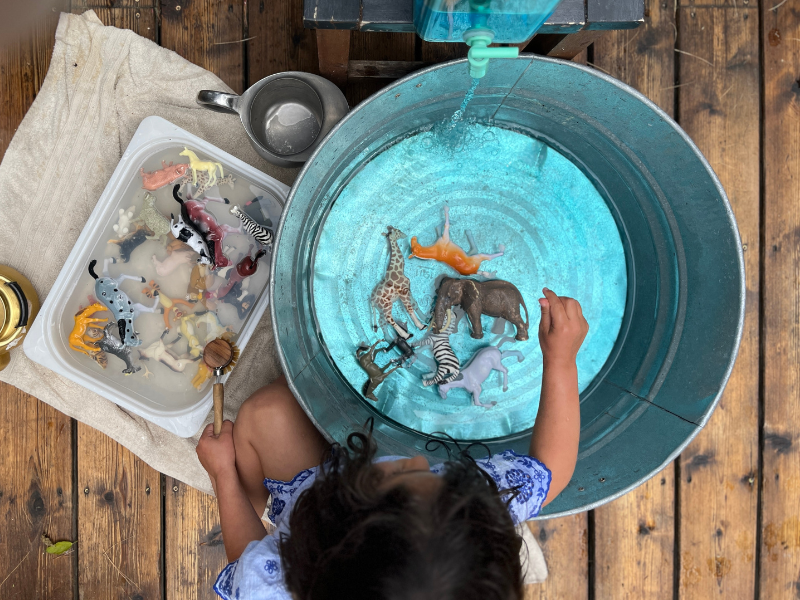
Water is a naturally engaging sensory material. Simple water play with cups, containers, and toys can provide hours of entertainment. Add bubbles, food coloring, or floating objects to enhance the experience. Supervise closely, of course, and consider outdoor water play for easier cleanup.
Sensory play isn’t just about fun; it’s a vital component of a child’s holistic development. By offering a variety of textures and experiences, you’re nurturing their creativity, problem-solving skills, and emotional well-being.## Beat the Heat: 10 Sensory Play Ideas for Kids This Summer
Summer offers endless opportunities for fun, but keeping kids engaged and entertained can be a challenge. Beyond traditional outings, sensory play provides a fantastic way to stimulate their development, encourage creativity, and provide a welcome distraction from screen time. These activities focus on engaging a child’s senses – sight, sound, smell, taste, and touch – and are particularly refreshing during the warmer months. Here are ten ideas to spark imagination and keep little ones happily occupied.
### 1. Water Beads: A Tactile Exploration
Water beads, also known as gel beads, are small, colorful spheres that expand when soaked in water. Their unique texture is incredibly appealing to children, offering a fascinating tactile experience. Supervise closely, especially with younger children, as they can pose a choking hazard. Consider incorporating scoops, containers, and small toys for added play possibilities. According to a recent study by the National Association for the Education of Young Children, tactile exploration is crucial for developing fine motor skills and hand-eye coordination.
### 2. Mud Kitchen Magic
There’s something inherently appealing about getting messy! A mud kitchen, whether a dedicated setup or simply a designated outdoor area, allows children to explore the natural world and engage in imaginative play. Provide pots, pans, utensils, and natural materials like leaves, twigs, and flowers. This encourages creativity, problem-solving, and a connection with nature.
### 3. Ice Excavation: A Cool Challenge
Freezing small toys or objects within blocks of ice creates a captivating excavation activity. Provide children with tools like small hammers (supervised), spoons, and warm water to chip away at the ice and reveal the hidden treasures. This is a fantastic way to introduce concepts like melting, temperature, and problem-solving.
### 4. Shaving Cream Sensory Bin: Fluffy Fun
Shaving cream, especially the unscented variety, offers a delightfully fluffy and tactile experience. Spread it out on a tray or table and let children explore with their hands, fingers, and small toys. Add a few drops of food coloring for a vibrant and colorful experience. This activity is excellent for developing fine motor skills and encouraging creativity.
### 5. Nature Collages: Artistic Expression
Take a nature walk and collect leaves, flowers, twigs, and other natural materials. Provide children with glue, paper, and other art supplies to create beautiful nature collages. This encourages creativity, artistic expression, and an appreciation for the natural world.
### 6. Water Play: Classic Summer Fun
Simple water play is always a hit! Fill a bin or container with water and provide cups, scoops, funnels, and small toys. Children can splash, pour, and explore the properties of water. For a twist, add bubbles or a few drops of food coloring. If you’re looking for a more structured setup, consider a sensory table for contained fun.
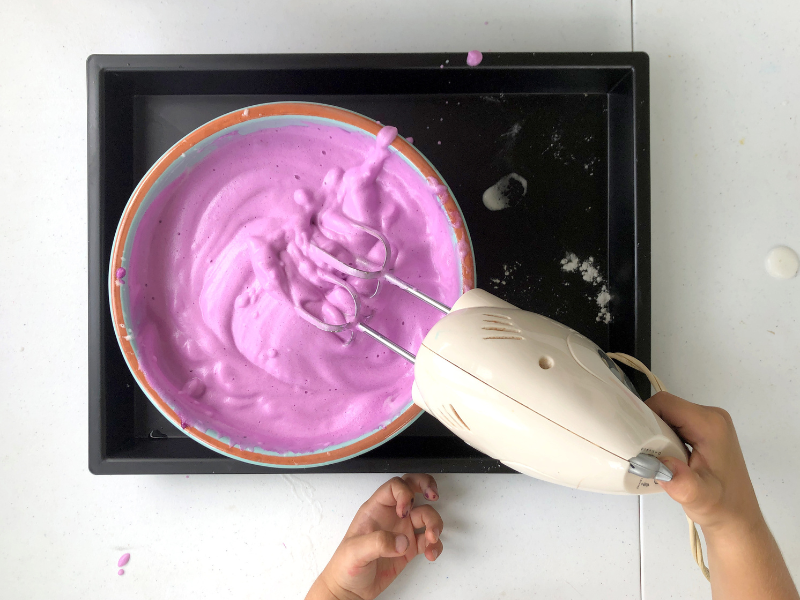
Aquafaba, the liquid from canned chickpeas, is a surprisingly versatile sensory play material. It can be whipped into a fluffy, meringue-like consistency, making it safe for babies and toddlers to explore with their hands and mouths. To create, whip the liquid from two cans of chickpeas with ¼ teaspoon of cream of tartar and a few drops of food coloring until soft peaks form.
### 8. Bubble Foam: Fluffy and Colorful Play
Bubble foam is a simple yet captivating sensory experience. Combine ½ cup of tear-free bubble bath with 1 cup of water and whip with a mixer until very fluffy. Pour the mixture onto a tray and let children explore with their hands, fingers, and small toys. Add a few drops of food coloring to create vibrant and colorful sensory art.
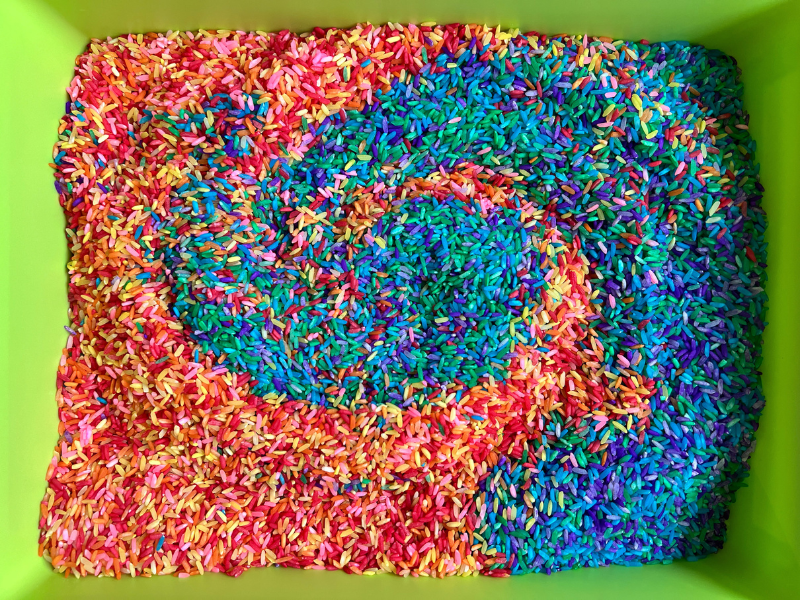
Dyeing rice with food coloring creates a visually stimulating and tactile sensory experience. Simply mix rice with a few drops of food coloring and spread it out on a baking sheet to dry. Once dry, pour the rainbow rice into a bin and let children explore with their hands, scoops, and small toys. For more ideas on creating engaging sensory bins, check out our guide to sensory bin ideas.
### 10. Edible Finger Paint: Safe and Creative Fun
For younger children who are still exploring with their mouths, edible finger paint provides a safe and creative sensory experience. Combine yogurt, pureed fruits or vegetables, and a few drops of food coloring to create a colorful and edible paint. Let children explore with their hands and fingers, creating colorful masterpieces on paper or a washable surface.
These sensory play ideas offer a fantastic way to keep children engaged, entertained, and learning throughout the summer months. Remember to always supervise children during sensory play and adapt the activities to their age and developmental level.
Beyond the Toy Box: 13 Sensory Bin Fillers for Engaging Play
Sensory play is crucial for a child’s development, fostering creativity, problem-solving skills, and emotional regulation. A sensory bin – a container filled with materials designed to stimulate the senses – is a fantastic way to provide this enriching experience. But what to fill it with? Beyond traditional sand and water, a world of textures and materials awaits. Here are 13 ideas to inspire your next sensory bin creation, offering diverse experiences for little hands and minds.
1. Rice: A Classic for Calm and Exploration
Rice is a wonderfully versatile filler, offering a gentle, calming experience for children. The soft texture and subtle sound create a peaceful environment for focused play. It’s an excellent base for exploring scooping, pouring, and imaginative scenarios.
2. Pasta: Shapes and Textures to Discover
Dry pasta, in its myriad shapes and sizes, provides a unique tactile experience. From the smooth curves of rotini to the ridges of penne, each shape offers a different sensation. Consider mixing different pasta types for added variety and challenge.
3. Oats: A Soothing and Natural Option
Oats, particularly rolled oats, offer a soft, comforting texture. They’re a natural and non-toxic option, making them ideal for younger children who may still put things in their mouths. Oats can also be easily combined with other materials, like small toys or natural elements.
4. Water Beads: A Tactile Delight (With Safety Precautions)
5. Popcorn Kernels: A Crunchy and Engaging Filler
Unpopped popcorn kernels offer a surprisingly satisfying tactile experience. Their small size and slightly rough texture make them fun to scoop, pour, and manipulate. This is a great option for children who enjoy a bit of a challenge. Dry cereal, like Cheerios or Rice Krispies, provides a familiar and colorful base for sensory play. The varying shapes and textures add interest, and the bright colors can be visually stimulating. Dried beans, whether chickpeas, lima beans, kidney beans, black beans, or lentils, are a fantastic filler for a sensory bin. Their varied shapes and sizes encourage scooping, pouring, and fine motor skill development. For an extra touch of creativity, consider 8. Cornmeal: A Fine and Flowing Texture
Cornmeal offers a unique, fine texture that’s different from other fillers. It flows easily, making it ideal for scooping, pouring, and creating patterns. This is a great option for children who enjoy exploring different textures. While often thought of as an outdoor activity, sand can be brought indoors for sensory play. Its granular texture is perfect for building, digging, and imaginative scenarios. Consider adding small toys or tools to enhance the experience. For more ideas on creating enriching play experiences, explore our guide to 10. Rainbow Rice: A Vibrant and Colorful Experience
Rice bins offer a calming and quiet opportunity for kids to explore sensory play. Dyed rice is incredibly easy to make. Simply place 1-1.5 cups of rice into a Ziploc bag, add a few drops of food coloring or liquid watercolors, and for more vibrant colors, add a splash of vinegar. Seal and shake to incorporate the color, then let it dry. The result is a beautiful and engaging filler that will captivate little ones. Salt, whether dyed with food coloring or left plain, is a wonderfully tactile material and great for all kinds of sensory play and experiences. You can use it instead of sand to set up a 12. Pasta Shapes: Exploring Textures and Forms
Dry pasta, in its myriad shapes and sizes, provides a unique tactile experience. From the smooth curves of rotini to the ridges of penne, each shape offers a different sensation. Consider mixing different pasta types for added variety and challenge. Oats, particularly rolled oats, offer a soft, comforting texture. They’re a natural and non-toxic option, making them ideal for younger children who may still put things in their mouths. Oats can also be easily combined with other materials, like small toys or natural elements. No matter which filler you choose, remember to add accessories like scoops, containers, and small toys to encourage exploration and imaginative play. Sensory bins are a wonderful way to foster creativity, develop fine motor skills, and provide a calming and engaging experience for children of all ages. Sensory play is a cornerstone of early childhood development, fostering creativity, problem-solving skills, and a deeper understanding of the world. While traditional sensory bins are fantastic, expanding beyond the container opens up a universe of possibilities for engaging little hands and minds. This article explores a range of tactile experiences, offering inspiration for enriching playtime and nurturing your child’s growth. Before diving into specific ideas, it’s crucial to understand why sensory play is so beneficial. Engaging multiple senses – particularly touch – stimulates brain development, enhances cognitive function, and promotes emotional regulation. These experiences help children learn about textures, temperatures, and spatial relationships, building a foundation for future learning. In fact, studies show that tactile stimulation can improve a child’s ability to focus and retain information. Water beads, while visually appealing, pose a potential safety risk for young children who may ingest them. Fortunately, there are several edible and equally engaging alternatives. Consider tapioca pearls or balls as a fantastic substitute. These offer a similar squishy texture and are completely safe if accidentally swallowed. For a more detailed look at safe sensory materials, explore our guide to sensory play safety. While playdough is a classic, let’s explore some less common, yet equally captivating, materials. Forget everything you know about traditional playdough! Cloud clay is incredibly light, easy to mold, and boasts a delightful scent. This unique material is perfect for building, sculpting, and imaginative play. Recipe: Combine 1 cup of cornstarch with ½ cup of hair conditioner and a few drops of food coloring. Mix thoroughly until a smooth, pliable clay forms. Finger painting is a quintessential sensory art experience! It allows children the freedom to explore color and texture with their hands, fostering creativity and self-expression. The tactile sensation of paint between their fingers is incredibly stimulating and beneficial for development. For the best finger paints for your little one, check out our recommendations at The Trendy Type’s Finger Paint Guide. Don’t limit yourself to bins! Consider these ideas to integrate sensory experiences into everyday play: Nature Walks: Encourage children to collect leaves, stones, and twigs, focusing on the different textures and shapes. Looking for more ideas to nurture your child’s development through play? Explore these resources: The TrendyType’s Guide to Sensory Play Sensory play is more than just fun; it’s a vital component of early childhood development. By embracing a variety of textures, materials, and experiences, you can nurture your child’s creativity, problem-solving skills, and overall well-being. Sensory play is far more than just fun and games; it’s a crucial component of early childhood development. Engaging a child’s senses – touch, sight, sound, smell, and taste – stimulates brain growth, enhances cognitive skills, and fosters creativity. But with a plethora of options available, choosing the right sensory materials can feel overwhelming. This guide will explore a range of materials, from classic favorites to innovative alternatives, helping you create enriching and stimulating experiences for your little ones. Before diving into specific materials, let’s understand why sensory play is so impactful. Through exploration and manipulation of different textures, colors, and forms, children develop crucial skills. These include: Fine Motor Skills: Grasping, pouring, scooping, and manipulating materials strengthen the small muscles in hands and fingers, preparing them for writing and other tasks. Certain materials have stood the test of time for good reason. These classics are readily available, affordable, and offer a wide range of sensory experiences. Rice: A versatile filler that’s perfect for scooping, pouring, and hiding small objects. Consider dyeing it vibrant colors for added visual appeal. While sensory bins are a fantastic starting point, don’t limit yourself. Numerous other materials can provide enriching sensory experiences. Oobleck: This non-Newtonian fluid (cornstarch and water) is a fascinating substance that acts like both a solid and a liquid. It’s a great way to introduce basic science concepts. You can find a detailed guide on How to Make Oobleck on our site. While sensory play is incredibly beneficial, safety should always be a top priority. Supervision: Always supervise children during sensory play, especially with smaller materials. Remember, the materials are just the starting point. Encourage your child to explore, experiment, and use their imagination. Ask open-ended questions, provide prompts, and let them lead the way. The goal is to create a stimulating and engaging experience that fosters learning and creativity. [Image of sensory bin with various materials] Sensory play is an investment in your child’s development. By providing a variety of materials and encouraging exploration, you can help them build essential skills, foster creativity, and have a whole lot of fun!6. Cereal: A Familiar and Colorful Base
7. Dried Beans: Versatile and Natural Exploration
9. Sand: A Timeless Classic for Imaginative Play
11. Colored Salt: A Versatile Sensory Material
13. Oats: A Natural and Soothing Option
Beyond the Bin: Creative Sensory Experiences for Little Explorers
The Importance of Tactile Exploration
Safe Alternatives to Water Beads
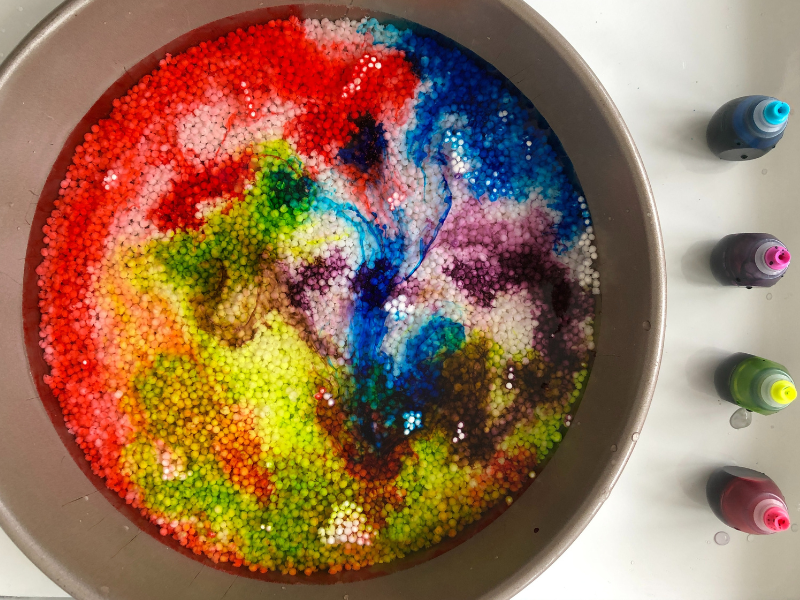
Beyond Dough: Unique Tactile Materials
Cloud Clay: A Fluffy Delight
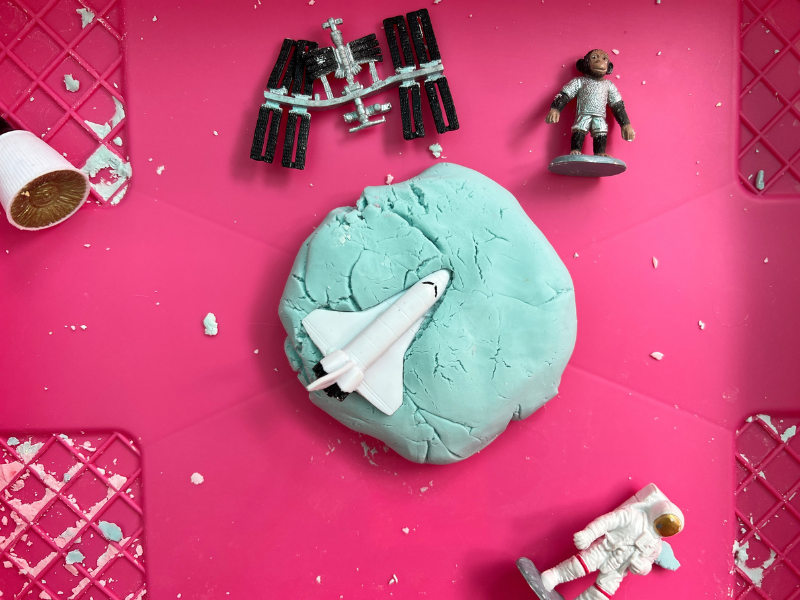
The Joy of Finger Painting
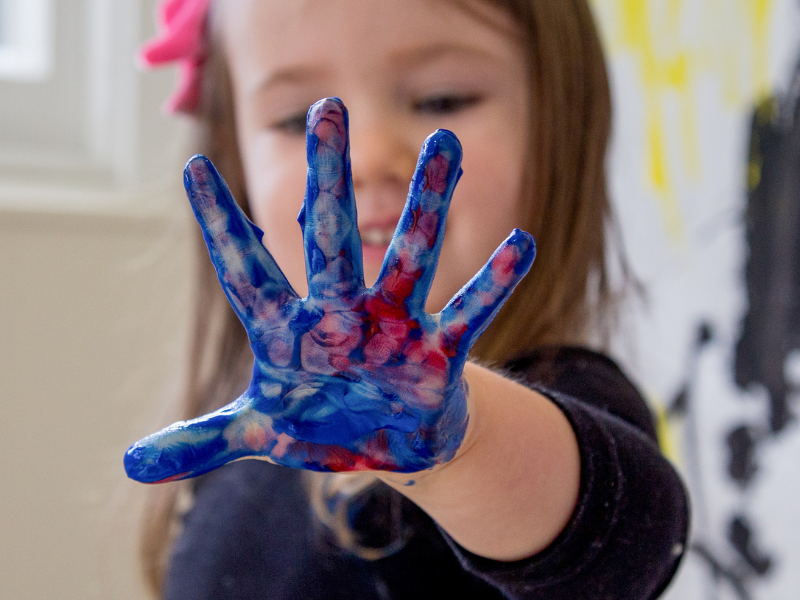
Expanding Sensory Play Horizons
Sensory Bags: Fill zip-top bags with paint, glitter, or water beads (with supervision) for a mess-free sensory experience.
Homemade Slime: A classic for a reason! Experiment with different recipes and add-ins for a unique tactile experience.More Inspiration from The Trendy Type
7 Sensory Play Ideas for Toddlers
How to Do a Baking Soda Experiment with KidsBeyond the Basics: A Deep Dive into Sensory Play Materials for Growing Minds
Why Sensory Play Matters: The Developmental Benefits
Cognitive Development: Sensory play encourages problem-solving, critical thinking, and the development of concepts like volume, weight, and texture.
Language Development: Describing sensations and experiences expands vocabulary and encourages communication.
Emotional Regulation: Engaging with sensory materials can be calming and therapeutic, helping children manage emotions and reduce stress.
Social Skills: Sensory play provides opportunities for collaboration, sharing, and turn-taking.Classic Sensory Bin Fillers: Tried and True Favorites
Dried Beans: Similar to rice, dried beans offer a different texture and can be used for sorting and counting activities.
Pasta: Various pasta shapes provide diverse textures and opportunities for imaginative play.
Sand: A classic for a reason! Sand encourages building, digging, and imaginative scenarios. Kinetic sand, a moldable version, offers a unique tactile experience.
Water: Always a hit! Water play encourages pouring, splashing, and exploration of buoyancy. Supervise closely, of course.Beyond the Bin: Expanding Your Sensory Material Toolkit
Cloud Dough: Soft, moldable, and incredibly satisfying, cloud dough (flour and oil) is a wonderful alternative to traditional playdough. Learn How to Make Cloud Dough for Kids with our easy-to-follow instructions.
Aquafaba: A surprising and sustainable option, aquafaba (the liquid from canned chickpeas) can be whipped into a fluffy, foam-like substance, offering a unique tactile experience. It’s also taste-safe, making it ideal for younger children. Explore How to Make Aquafaba for a detailed guide.
Shaving Cream: A fluffy, cloud-like texture that’s perfect for messy play. Add food coloring for extra fun.
Playdough: A classic for a reason! Homemade or store-bought, playdough encourages creativity and fine motor skill development.Safety Considerations: Ensuring a Positive Experience
Age Appropriateness: Choose materials that are appropriate for your child’s age and developmental stage.
Allergies: Be mindful of any allergies your child may have.
Choking Hazards: Avoid small objects that could pose a choking hazard.
Taste-Safe Options: For younger children who may put materials in their mouths, opt for taste-safe options like aquafaba or homemade playdough.Beyond the Materials: Encouraging Exploration and Creativity
